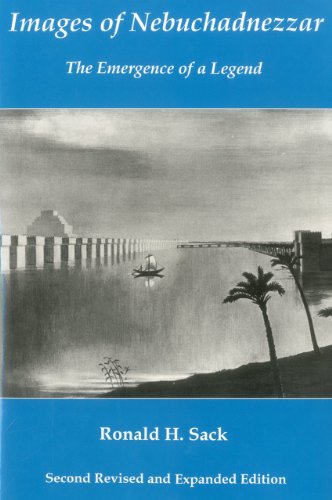Product desciption
Images Of Nebuchadnezzar The Emergence Of A Legend 2nd Rev Exp Ronald Sack by Ronald Sack 9781575910796, 1575910799 instant download after payment.
Images of Nebuchadnezzar attempts to probe the diversity of cultural attitudes reflected in the characterizations of this famous king through an examination of both the original cuneiform sources as well as the accounts of chronographers written in Greek, Roman, and medieval times. Included in this revised and expanded second edition are two new chapters that examine both Nebuchadnezzar's administrative policies and the impact that his death had on both contemporary and later cultures. Both the positive and negative images of the king are explored, with conclusions being developed as to what the authors of the various surviving accounts actually thought the king really was. In the process, the whole nature of historiography in the ancient world is analyzed, and a number of broad conclusions are developed.
Anyone who has ever read Second Kings or the books of Daniel and Jeremiah of the Old Testament is familiar with the name of Nebuchadnezzar, the king of Babylon who conquered the kingdom of Judah and destroyed Solomon's temple. As the second member of the Chaldean dynasty of Mesopotamia (626-539 B.C.), he ruled for forty-three years (605-562 B.C.), during which time he also led military campaigns into Syria and Lebanon. He also organized a number of building projects that were to transform Babylon into one of the seven wonders of the ancient world. Among his noteworthy achievements were the construction of massive fortification walls around Babylon, the refurbishing of Marduk's temple in the city,and the building of huge palaces that served as the king's residences. Tales of these legendary achievements, as well as those of his father, Nabopolassar (626-605 B.C.), also found their way into the narratives of a number of Greek, Roman, and medieval historians and chronographers many centuries later.
Unfortunately, much of the record of Nebuchadnezzar's achievements that was written in his own time has not survived. Instead, only secondary accounts of his military campaigns or his construction projects in Babylon written in Greek, Latin, Hebrew, or Arabic are available for analysis. These stories vary greatly in content and emphasis and, in many cases, distort much of what we know from Nebuchadnezzar's own sources. The Hebrews, for example, described Nebuchadnezzar's siege of Jerusalem in such a way as to consider it something that should never again be repeated. The Greeks, on the other hand, saw the building projects in Babylon as evidence of almost superhuman achievements, as monuments that were the result of efforts by a king who was almost godlike. Why, then, is there such diversity in the characterizations of Nebuchadnezzar? This book proposes answers to these questions.


